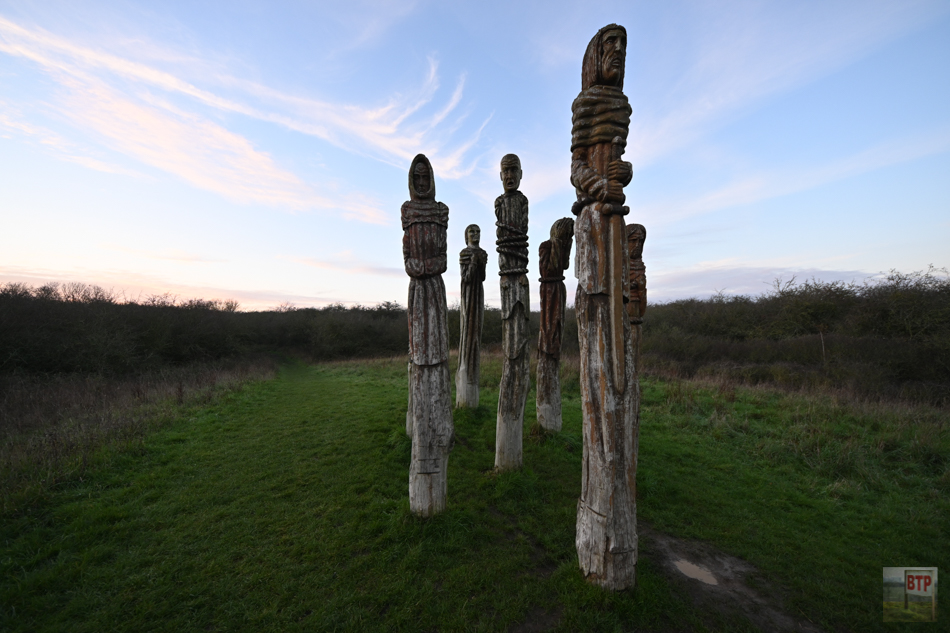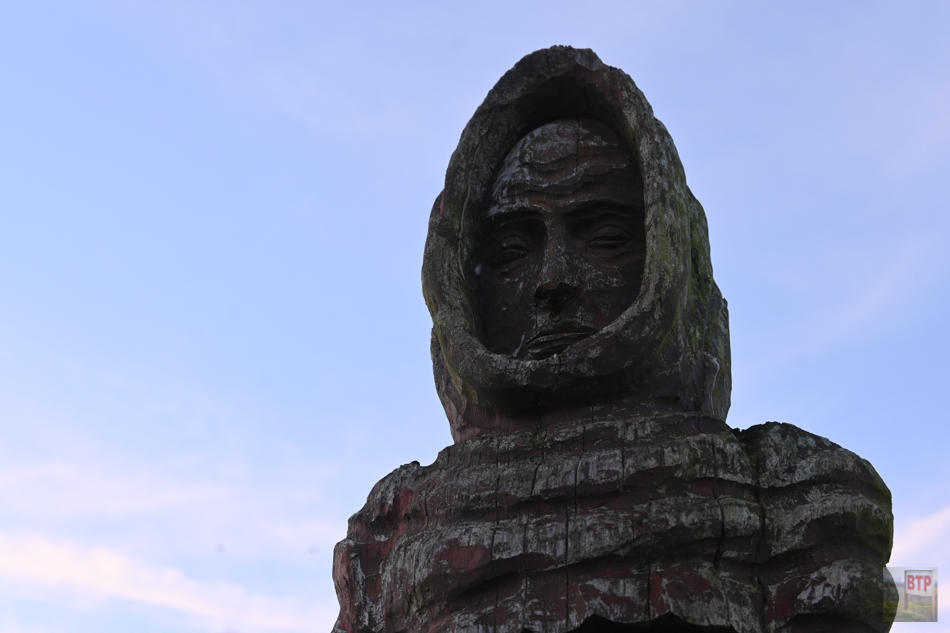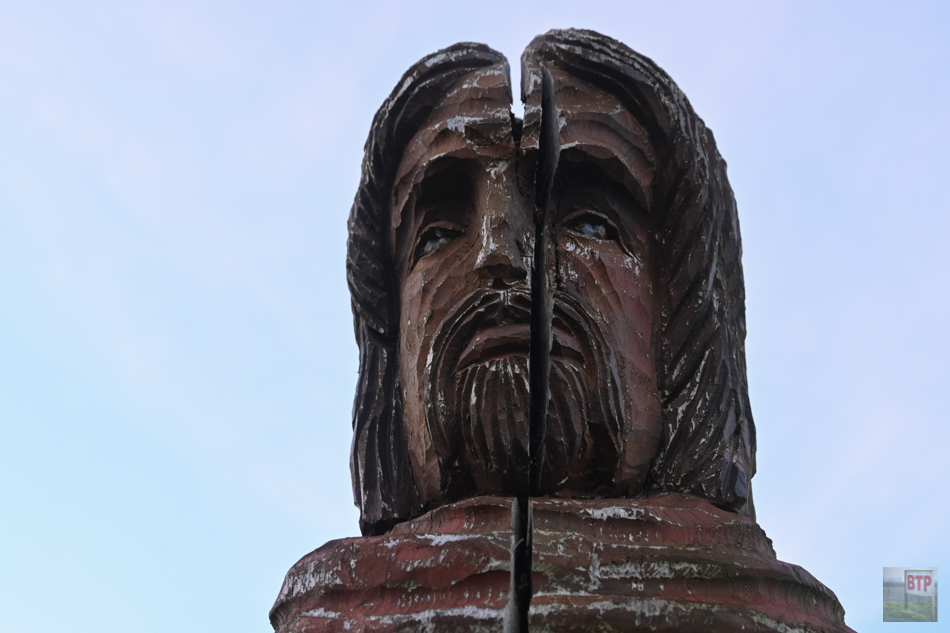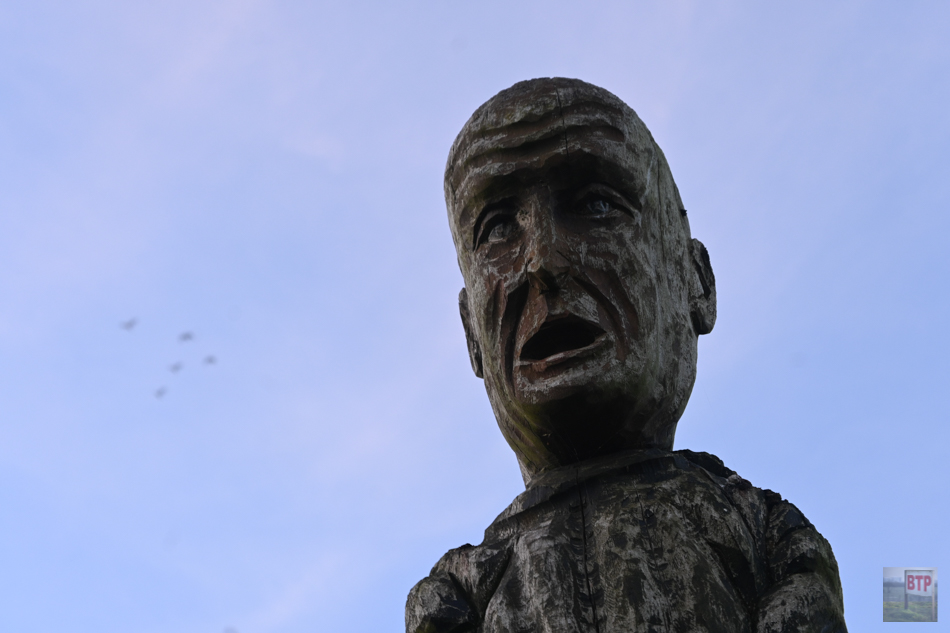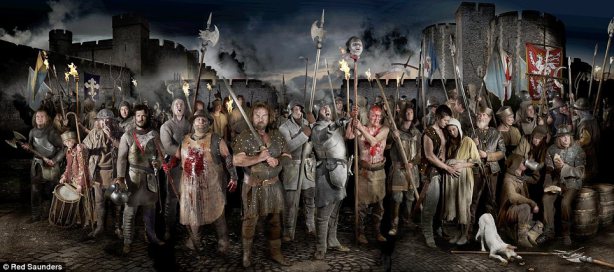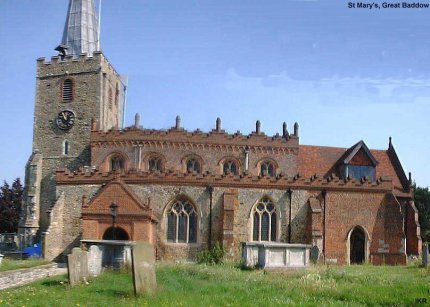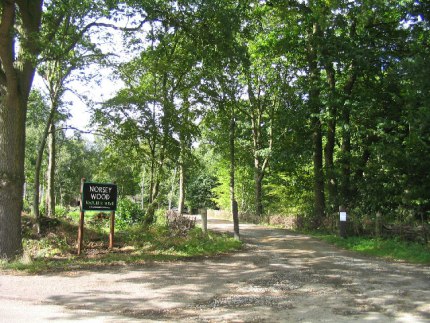Pictured above are a set of eerie wooden sculptures of the rebels at Wat Tyler Country Park, Pitsea, Essex. Whilst the park does not in fact have any direct connection to the revolt, only its proximity to Fobbing, these sculptures commemorate the 1381 events that happened in the wider area.
The Peasant’s Revolt of 1381 is a subject recognized by most of us around the country, even if we have only heard about the individual ‘Wat Tyler’. What some of us know, is that the revolt began in Essex and Kent, that’s why it fits in nicely with BeyondthePoint.co.uk, as we reveal to you this not usually talked about side of the areas’ local history.
It all began with the Black Death – the Bubonic Plague, of 1349. So many people were killed and effected by the widespread disease, and it was brought over on ships by foreign rats which let off fleas carrying the menace. The population of England was cut drastically, and now, there was no longer a large body of peasant workers. This meant that those who were left tried to haggle their masters a higher pay, to make up for the lack of ’employees’. The government, which had none of this, far detached form its people, deiced to revert their wages back again. To add insult to injury, they brought in ‘the third medieval poll tax’, allegedly to fund the country’s overseas interests. This heightened tension between the gentry and peasants, which were suffering poor lives due to the strongly hierarchical ‘Feudal System’ – a system which clearly outlined the status and power of social classes, common throughout the mid medieval period. This tax was one of three groats per person, no matter how poor, meaning those who were poor would suffer, while those richer would not – there was no discretion given according to wealth. With a slave-like serfdom enslaving the people, they were not happy. Having to work up to two days a week on church land was not popular.
(Left) A perhaps over-grisly photographic reconstruction of a mob of revolutionaries gathering near the Tower of London, with Wat Tyler at front wielding a large two-handed sword. (Right) St. Mary’s Church, Great Baddow, where Jack Straw gathered Essx’s rebels in the churchyard before he led them to London. Note the church was heavily restored over 100 years go since its contemporary incarnation at the time of the revolts.
In 1381, peasants began to protest and did not pay their tax. A tax collector visited Fobbing in Essex to investigate, only to be forced out by the peasants. Another event later occurred in Brentwood, where the party was attacked, and violently, six officials were killed. Other local villages joined the righteous disarray. The misconduct soon spread to Kent, and a rebellion occurred at Maidstone. Wat Tyler, a mysterious character, here joined the fray. He was believed to have been born in Brenchley, Kent, according to local tradition, although historians say he was born in Essex. Two more instigators joined the battle to lead the Essex side of the gathering into London. John Ball was a priest of reformed Christianity of the time, known as ‘Lollardy’, who was situated in Kent at time of rebellion, although lived in Colchester prior to then. Jack Straw was a man who has also been referred to as Rackstraw and John Rakestraw, was probably a priest or preacher, was allegedly provoked to rebel after an assault on his daughter by a tax collector, and was in this source called by the alias of ‘John Tyler’ leading the speculation that he was in fact the same man as Wat Tyler himself. While Wat Tyler supposedly lead the Kentish rebels, Straw was said to have led those of Essex. One source describes how he lead a crowd into the main rebellion, on its way to London, from St. Mary’s Churchyard, Great Baddow, Essex.
The rebels soon met up in their thousands at the capital, London, where they caused blood-stained havoc. The Savoy Palace – where the Savoy hotel stands today, was burnt to the ground, as a royal residence to the king’s uncle John of Gaunt. The Tower of London was under siege, and eventually, the rebels broke inside. rushing to the chapel, priests and those of high authority to the tax, were torn away to the traitor’s area of Tower Hill, where they were beheaded viciously one by one. their heads – stuck on stakes, and shown around the city as a warning and a victory. On the following day, a meeting was held to reconsider the clearly disputed taxes – June the 15th. King Richard II rode out to meet the ravening mob, and Wat Tyler mockingly rode close in a taunting manor to the king and his horse. Suddenly, a temper-filled squire threw him down, and ran him through with his sword, in an unexpected, merciless flurry. This is what http://www.middle-ages.org.uk said:
He knocked Wat Tyler off his horse with a broadsword and as Wat Tyler lay on the ground one of the king’s squires stabbed him in the stomach, killing him. The English Peasants’ War was over. Wat Tyler’s head was cut from his corpse and displayed on London Bridge. John Ball was hanged, drawn and quartered in the presence of Richard II and his quarters were displayed in four other towns as a warning to other rebel. Jack Straw was executed and his head displayed on London Bridge. The promises made to the rebels by Richard II were quickly withdrawn although the poll tax was abolished.
(Left) The Savoy Hotel today, London, on the site of the Savoy Palace raised by the peasants in 1381. A great shot from ‘E-Architect’ website. (Right) Norsey Wood, Billericay, where the remaining retreating peasants from London were slaughtered. From ‘geograph.org.uk’
Following the loss of all their leaders, the peasants lost their courage and became a broken crew. The fleeing peasants then went to Essex, Unsure of what action to take next. It was at Billericay, where the Battle of Billericay took place in Norsey Wood. The royals followed in pursuit, without a care to listen to the majority. They came and brutally murdered around 500 peasants encamped at the wood that day.
Despite being fueled by bloodshed, the revolts of 1381 did have a positive outcome:
1.On the surface, the peasants were crushed, their demands denied, and many executed. However, the land owners had been scared, and in the longer term several things were achieved.
2. Parliament gave up trying to control the wages the landowners paid their peasants.
3. The hated poll tax was never raised again.
4. The Lords treated the peasants with much more respect. They made more of them free men ie. they were not owned as part of the land. This benefited in the end, as free men always work much harder.
5. This marked the breakdown of the feudal system, which had worked well during the early Middle Ages, but was now becoming outdated as attitudes were beginning to change.
I hope you enjoyed this long yet flavourful insight into the events of 1381, and have learnt what happened – especially in Essex. If Medieval local history floats your boat, explore this site for more articles.
This entry was posted in Location Report
